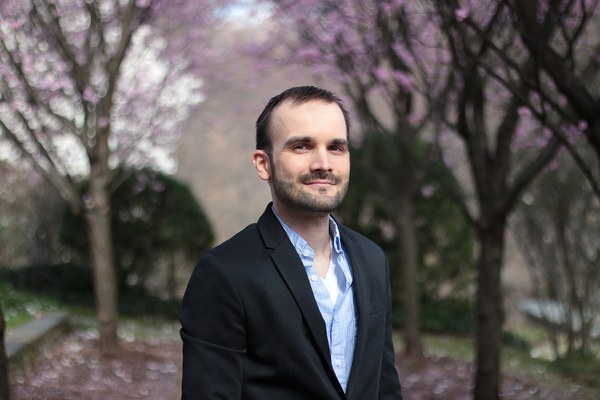Ryan Clasby, who has worked as an adjunct professor at the University of Missouri–St. Louis, Saint Louis University, and Webster University, is a fellow in Pre-Columbian Studies at Dumbarton Oaks in 2016–17. His recent research has focused on Huayurco, a site in the province of Jaén in Peru, where he has worked to unearth evidence of long-distance interregional trade between Andean and Amazonian cultures during the Formative Period (roughly 1800–200 BC).
What is the state of scholarship on the Andean-Amazonian divide? Has there been a recent reevaluation of interactions between the two regions? Is the understanding more fluid now, or more rigid?
A little bit of both, I think. In the forties and fifties, people were treating them as very separate cultural areas that didn’t have a lot of interregional movement or exchange going on. But in modern times, the archaeological data really overturns all those prior assumptions. You can’t just rely on these rigid cultural areas anymore. You have to actually look at the data that’s coming out, and the amount of exchange that was going on. At the same time, though, you still have archaeologists who aren’t consciously or actively excluding the Amazon—but it’s not quite on their radar in terms of importance. Ideally, the new research will shed light on why we need to study this particular area.
In your talk you discussed Pedro Rojas, who did interesting excavation work in 1961, but then there was a lull. Why was there no follow-up to his work?
So, Pedro Rojas wasn’t principally a field archeologist. He was the person that did all of the drawings for Julio Tello, who’s considered the father of Peruvian archaeology. Early on, Tello had spent a lot of his time working on the Chavín culture, but his theory was that Chavín had its origins in the eastern slopes. When Tello died in the late forties, Rojas wanted to keep working with this hypothesis; in particular, he’d found examples of stone bowls in local museums that he was very interested in. So Rojas did a three-year expedition, but after that you only see a small amount of very ephemeral projects that were not in any way sustained.
Why is that the case? I think the Rojas findings weren’t exactly well published, and when they were, they were just given a brief mention in certain books. You do have archaeologists (particularly those who were students of Donald Lathrap) who continued to do work in the Amazon, but they tended to focus on other areas.
There was also another major factor: For a long time, Peru and Ecuador were involved in a border war, and they couldn’t decide where the boundaries were, and this created a sort of no-man’s-land that deterred investigation. Certainly, it made it more difficult for both Peruvians and foreigners to conduct research within the region.
How does your work relate to this history?
The fact is, since Rojas excavated, these stone bowls do seem to have been ignored in the literature. And you really do see them a lot during this particular period—in fact, Dumbarton Oaks has one from the North Coast of Peru in its collection. So one of the things I wanted to do was explore this idea, which Tello, Rojas, Donald Lathrap, and Richard Burger proposed, that Huayurco is producing all these items as a way of participating in these long-distance exchange networks. Because most of what has been suspected of coming from the Amazon is highly perishable material that’s not going to be preserved at all, this was one of those few chances to really explore what was going on.
When I started to do original surveying, going into this area and going to the local museum collection, I realized that what Rojas found wasn’t a novelty—they were producing these stone bowls on a large scale. I think I said there are over 250 examples in the local museum. Not only were they producing these bowls, but the production seems to have been particularly unique and precocious for this specific area. Even in other places where you do see stone bowls, they don’t seem to be producing them to quite the same degree as they are at Huayurco.
Read more interviews in our ongoing series.

